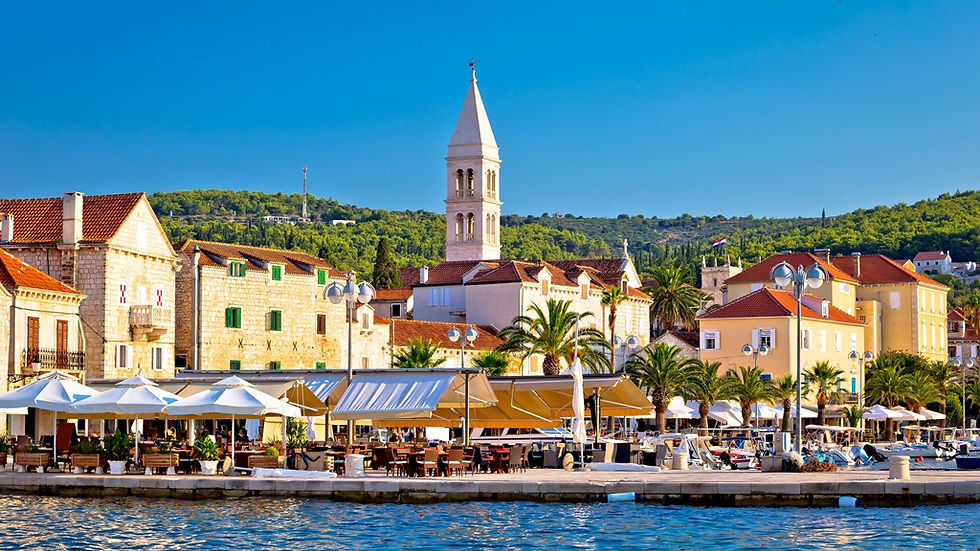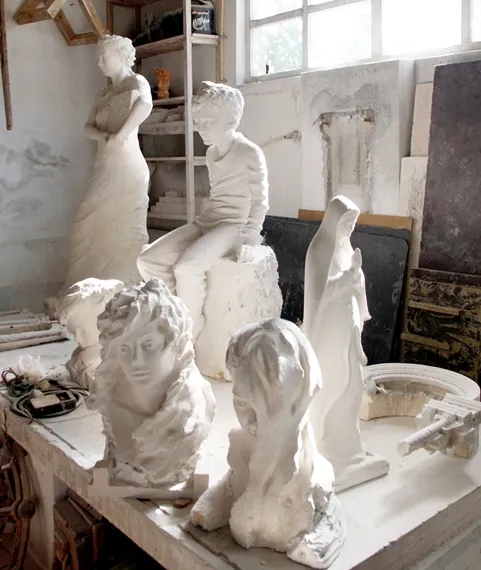Island Brač: The Stone-Built Island and the Shape-Shifting Beach “Golden Horn”
- Teo Drinkovic
- Oct 24
- 5 min read
Updated: Nov 6
Discover How Island Brač Blends Ancient Stone-Craft, Sweeping Adriatic Vistas, and the Iconic Zlatni Rat (Golden Horn) Beach

Introduction to Brač: A Gem of the Adriatic
If you’re seeking a destination rich in stories of stone, a beach that changes shape, and an island alive with tradition, then the island of Brač is perfect for you. Brač is infused with the scents of pine trees, limestone, and the sea. This unique blend has captured the hearts of all who visit.
Located in the heart of the Dalmatian archipelago, between Split and Hvar, Brač offers a delightful mix of Mediterranean relaxation and Dalmatian culture. Here, you can find everything from world-famous beaches to hidden monastic coves.
The island’s most renowned beach is Zlatni Rat, famous for its ever-changing shape influenced by the wind. Brač is home to several central settlements: Supetar, Bol, Pučišća, Postira, Milna, and Sumartin. Each has its own story, rhythm, and flavor.
A Short History of Brač
Brač boasts a rich history that stretches back thousands of years. It has witnessed the rise and fall of various peoples, technologies, and civilizations. In prehistoric times, it was inhabited by Mesolithic and Neolithic peoples. Later, the Illyrians arrived during the Bronze and Iron Ages, developing livestock farming and agriculture.
With the arrival of the Romans, Brač played a significant role. The stone from its quarries was used to build Roman villae rusticae and monumental constructions. Wikipedia
In the early Middle Ages, the Croats settled on the island, shaping its cultural and linguistic identity. Over the centuries, Brač was ruled by various powers, including the Venetians and Habsburgs. In more recent times, it became part of Yugoslavia and ultimately independent Croatia. This mix of ancient roots, stone heritage, and sea routes has created an island that offers both deep history and stunning sunlit beaches.

Brač Stone and Stone-Masonry: An Island That Builds Global Architecture
On Brač, stone is more than just a natural resource; it’s a cultural and genetic code of the islanders. The white limestone, known as “Brač stone,” has been used in buildings that have stood for centuries.
According to records, the white Brač limestone extracted from quarries on the island ended up in the palace of Diocletian in Split and is even cited in the façade of the White House in Washington. media.nestseekers.com
Centuries of stone work have given the island a distinctive architectural imprint and a school of stonemasonry that attracts curious minds and art students. Settlements formed around coves, churches, and defense towers, with islanders oscillating between sea and karst.
The heart of this story lies in the village of Pučišća. Quarries around Pučišća date back to the Middle Ages. One of the largest, the “Veselje” quarry, was mentioned as early as 1455 and was used by the famed builder Juraj Dalmatinac. The Stonemasonry School of Pučišća, the only one of its kind in Croatia, has been educating master stone-cutters since 1909.
Picture students in the 21st century shaping stone with hammer and chisel, a tradition passed down through generations. The school is not just a craft workshop; it’s a visitor spot where you can see the workshop and feel how stone becomes art. This technique and tradition give Brač its unique charm. When the sun illuminates the quarries and artistically carved columns, you realize that here, it’s not just about tourism; here, stone is the foundation of life.
The “Veselje” quarry, the statues, and the Stonemasonry School of Pučišća
Source: Google.com
Zlatni Rat: A World-Class Beach Phenomenon
If Brač has a global attraction, it’s the beach Zlatni Rat near Bol. But this is no ordinary beach; it’s a phenomenon. It’s a spit of deposited sediment that extends almost half a kilometer into the sea. Its tip shifts shape under the influence of sea currents, waves, and winds. www.visit-croatia.hr
This is why it’s called a geological miracle. The world media have ranked it among the most beautiful beaches in Europe for years. Imagine yourself in a pine forest surrounding the beach, with crystal-clear sea and white pebbles. The shape of the beach is never the same!
You come one time, and the tip is slightly left; another time, slightly to the right. That “living” form gives the destination a special magic. Zlatni Rat is vital for Brač as it provides the island with a unique world brand. Visitors who come for Zlatni Rat often stay to explore everything else.
The shapeshifting beach Zlatni Rat near the town of Bol
Source: Google.com
Tourism, Attractions, and What Makes Brač Special
Tourism on Brač isn’t just about one beach, although Zlatni Rat draws most visitors. The island offers a variety of activities, including hiking, history, gastronomy, quiet coves, and livelier destinations.
The summit of Vidova Gora, located above Bol, is the highest peak of all Adriatic islands, standing at about 778–780 m. It provides a panoramic view that will inspire even non-hikers to make the climb.
From the top, you can see the entire archipelago: Hvar, Vis, Šolta, the coastal massif, and, of course, Zlatni Rat far below. The trails leading up are excellent for walking, cycling, and hiking. Early morning rewards you with unforgettable views and peace that lingers in your memory.
Among historical sites, the old monastic community hidden in the rock, Pustinja Blaca (Blaca Hermitage), occupies a special place. Founded in the 16th century by settlers escaping the Turks, it grew into a cultural and scientific center with a rich library and rudimentary astronomical devices. CroatiaUp
The old monastic community hidden in the rock called Blaca

Today, Blaca is a place of silent fascination: a mix of hermit simplicity and intellectual heritage hidden in stone. Visitors who reach it by foot or by sea pass through a scene that resembles an open-air museum.
Gastronomy and Wine: A Taste of Brač
Brač offers traditional dishes like lamb, fish, olive oil, and indigenous wine varieties. Olive groves and vineyards are scattered across the island, making tastings increasingly popular.
A highlight: lamb on Brač is synonymous with quality and organic rearing in Croatia. Wine-making is a vital cultural strand here. Small family wineries produce diverse styles of wines. Wine tastings in Nerežišća and other villages showcase that authenticity. CroatiaUp
Olives, lamb, and fish in Brač
Source: Google.com
Nightlife on Brač: A Blend of Energy and Relaxation
The nightlife on Brač is diverse. In Bol, the energy pulses with clubs and beach-bar evenings, while Supetar, Pučišća, and Milna offer a more relaxed atmosphere with taverns and marinas. These spots are ideal for those who prefer live klapa (traditional Dalmatian singing) to DJ sets.
As for accommodation, you’ll find everything from family rooms and konobas (taverns) to luxury villas and larger hotels. This variety means anyone can find their ideal pace, whether it’s an early morning hike or lounging with a cocktail.
Why Choose Brač?
Brač is an island of contrasts, marrying rocky permanence with ever-changing sea forms. Zlatni Rat is the face everyone recognizes, but the heart of the island beats in its small villages, olive groves, wine cellars, and local taverns.
If you want an island where you can surf the waves, hike to breathtaking vistas, or simply sit with a plate of lamb and a glass of local wine as the sun sets, Brač will not disappoint. Pack light shoes, a good book, and an appetite for flavors, because the island is waiting.























Feel free to comment!